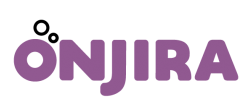In a modern digital planet, businesses and experts handle thousands of documents across diversified clients, projects, and areas. Without a consistent building for naming files, it is difficult to settle information fast, ensure form accuracy, and uphold compliance. A patterned file naming tradition not only improves adeptness but also reduces the risk of errors and miscommunication.
This item explains how to design a file naming method that is useful, scalable, and smooth for everyone in your group to follow.
Why File Naming Conventions Matter
A good designating convention is also just labeling—it’s about organization, approachability, and accuracy. This is very useful before you learn about “how to organize client files”. Here’s the reason it matters:
• Improved Searchability:
Files with clear, logical names are easier to establish without overdone browsing.
• Reduced Errors:
Eliminates disorientation over outdated or duplicate files.
• Collaboration:
Makes it smooth for teams to share and revise files without misplacing or deterring information.
• Compliance & Security:
Helps guarantee sensitive files are traced and stored correctly for audits or legal necessities.
Best Practices for File Naming
When plotting your convention, maintain these best practices in mind:
1. Keep It Short but Clear
Long file names are cumbersome and can not be fully on all arrangements. Aim for clarity and shortness.
2. Avoid Special Characters
Characters like &, /, ?, or * can cause compatibility issues. Stick to underlines or hyphens instead.
3. Use Leading Zeros
For sequences or numbers, superior zeros maintain decent sorting and forbid files from appearing as not working.
4. Be Consistent with Dates
Always follow a single date format for reasonable sorting.
5. Document Your Rules
Create a comprehensive guide or policy in order to avoid every competitor applying the system as usual.
How to Implement a File Naming Convention
Designing a naming tradition is only the first step—successful implementation is equally important.
• Involve the Team:
Gather recommendations from those who use files regularly to ensure the system is intuitive and proficient.
• Train Staff:
Provide clear education and onboarding meetings to guarantee that all understand the process.
• Regular Audit:
Periodically review folders to confirm agreement and correct deviations.
• Leverage Automation:
Where attainable, use templates, macros, or document management forms to enforce rules automatically.
By considering file naming as one of your broader document administration strategies, you’ll counter confusion and advance long-term adeptness.
Conclusion
A standardized file designating convention is a small change that delivers great benefits. It ensures files are easy to find, reduces duplication, and reinforces collaboration across crews. The key is to expand a system that balances clearness, consistency, and simplicity—then deliver to using it usually.
By putting makeup in place contemporarily, you save innumerable hours tomorrow and forge a foundation for systematized, efficient, and secure document administration.


